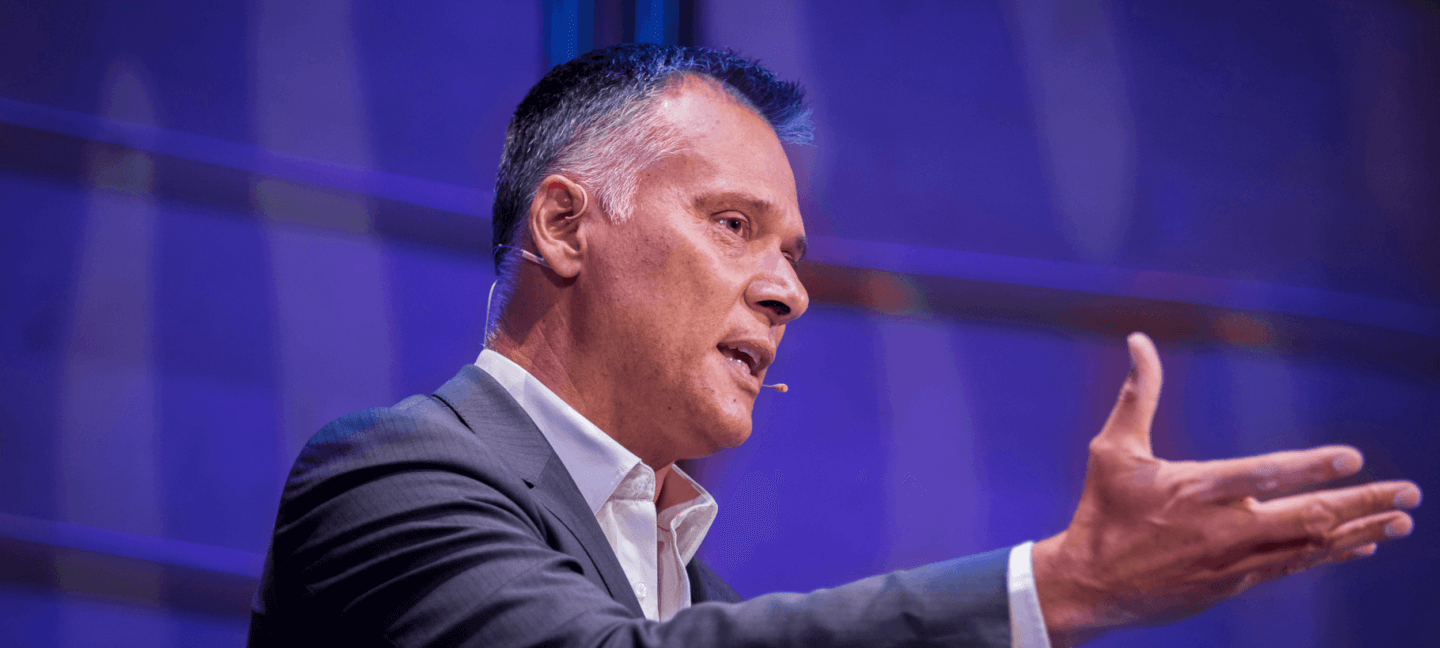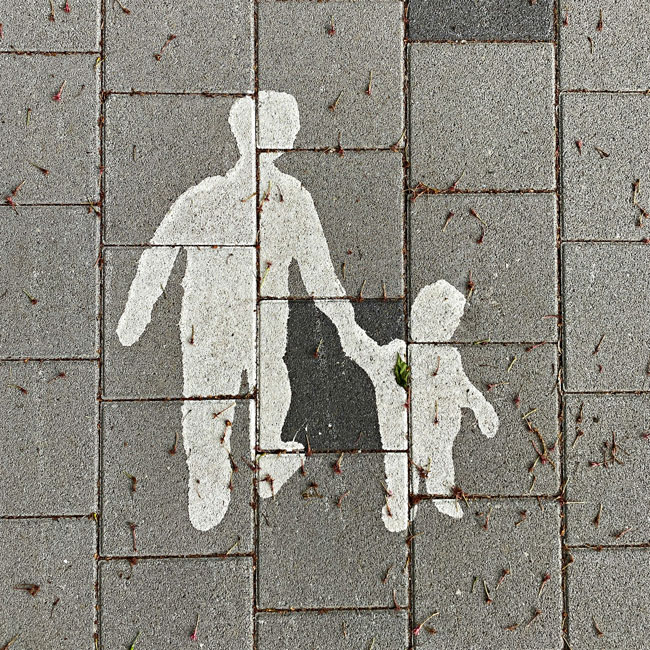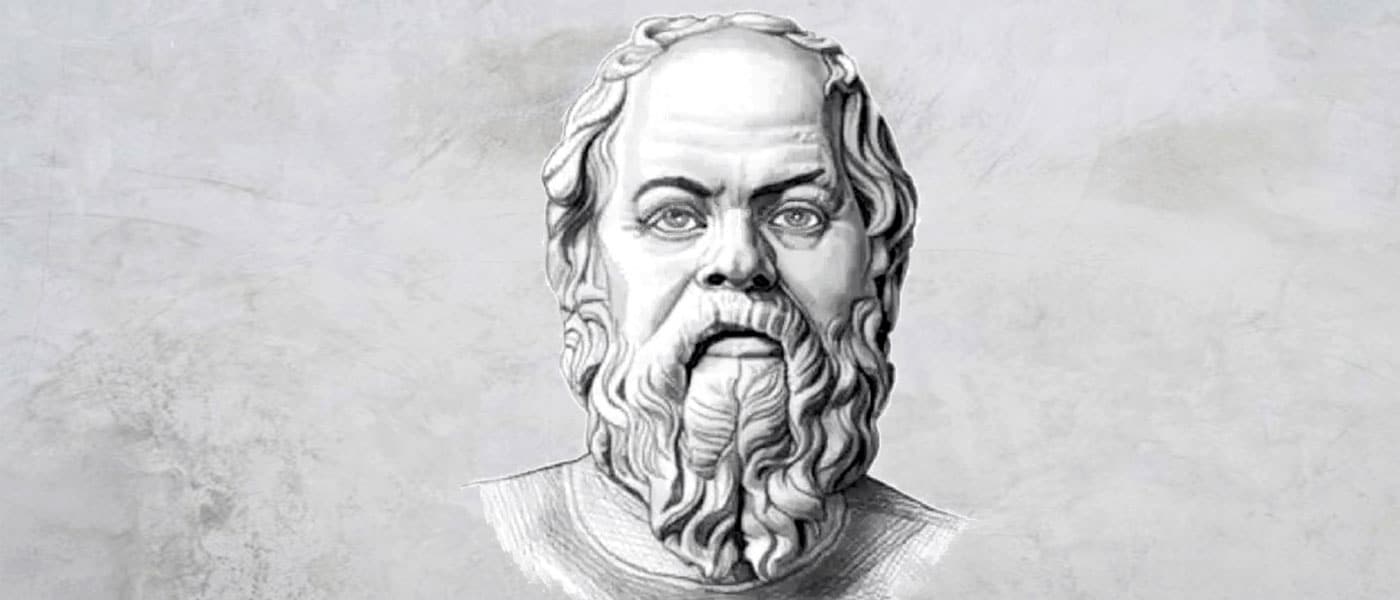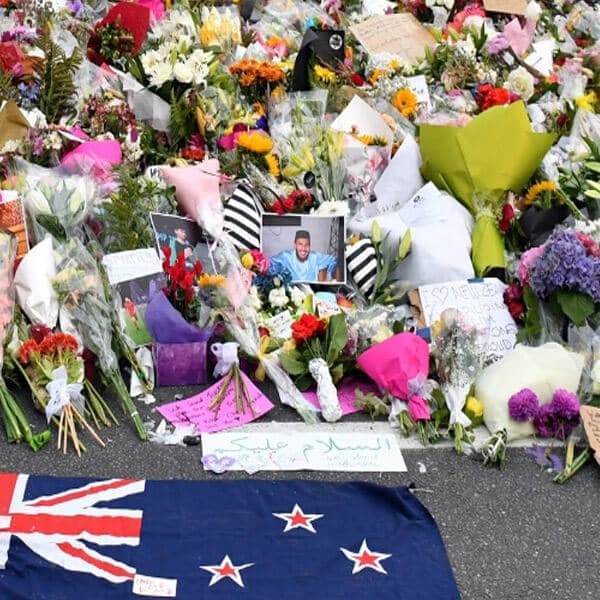Ethics Explainer: Deontology

Deontology is an ethical theory that says actions are good or bad according to a clear set of rules.
Its name comes from the Greek word deon, meaning duty. Actions that align with these rules are ethical, while actions that don’t aren’t. This ethical theory is most closely associated with German philosopher, Immanuel Kant.
His work on personhood is an example of deontology in practice. Kant believed the ability to use reason was what defined a person.
From an ethical perspective, personhood creates a range of rights and obligations because every person has inherent dignity – something that is fundamental to and is held in equal measure by each and every person.
This dignity creates an ethical ‘line in the sand’ that prevents us from acting in certain ways either toward other people or toward ourselves (because we have dignity as well). Most importantly, Kant argues that we may never treat a person merely as a means to an end (never just as a resource or instrument).
Kant’s ethics isn’t the only example of deontology. Any system involving a clear set of rules is a form of deontology, which is why some people call it a “rule-based ethic”. The Ten Commandments is an example, as is the Universal Declaration of Human Rights.
Most deontologists say there are two different kinds of ethical duties, perfect duties and imperfect duties. A perfect duty is inflexible. “Do not kill innocent people” is an example of a perfect duty. You can’t obey it a little bit – either you kill innocent people or you don’t. There’s no middle-ground.
Imperfect duties do allow for some middle ground. “Learn about the world around you” is an imperfect duty because we can all spend different amounts of time on education and each be fulfilling our obligation. How much we commit to imperfect duties is up to us.
Our reason for doing the right thing (which Kant called a maxim) is also important.
We should do our duty for no other reason than because it’s the right thing to do.
Obeying the rules for self-interest, because it will lead to better consequences or even because it makes us happy is not, for deontologists, an ethical reason for acting. We should be motivated by our respect for the moral law itself.
Deontologists require us to follow universal rules we give to ourselves. These rules must be in accordance with reason – in particular, they must be logically consistent and not give rise to contradictions.
It’s worth mentioning that deontology is often seen as being strongly opposed to consequentialism. This is because in emphasising the intention to act in accordance with our duties, deontology believes the consequences of our actions have no ethical relevance at all – a similar sentiment to that captured in the phrase “Let justice be done, though the heavens may fall”.
The appeal of deontology lies in its consistency. By applying ethical duties to all people in all situations the theory is readily applied to most practical situations. By focussing on a person’s intentions, it also places ethics entirely within our control – we can’t always control or predict the outcomes of our actions, but we are in complete control of our intentions.
Others criticise deontology for being inflexible. By ignoring what’s at stake in terms of consequences, some say it misses a serious element of ethical decision-making. De-emphasising consequences has other implications too – can it make us guilty of ‘crimes of omission’? Kant, for example, argued it would be unethical to lie about the location of our friend, even to a person trying to murder them! For many, this seems intuitively false.
One way of resolving this problem is through an idea called threshold deontology, which argues we should always obey the rules unless in an emergency situation, at which point we should revert to a consequentialist approach.
But is this a cop-out? How do we define ‘emergency’?
Ethics in your inbox.
Get the latest inspiration, intelligence, events & more.
By signing up you agree to our privacy policy
You might be interested in…
Opinion + Analysis
Politics + Human Rights, Society + Culture
Respect for persons lost in proposed legislation
Opinion + Analysis
Politics + Human Rights, Health + Wellbeing, Society + Culture
I changed my mind about prisons
Opinion + Analysis
Politics + Human Rights, Science + Technology
Who’s to blame for Facebook’s news ban?
Opinion + Analysis
Politics + Human Rights, Relationships, Society + Culture
You won’t be able to tell whether Depp or Heard are lying by watching their faces
BY The Ethics Centre
The Ethics Centre is a not-for-profit organisation developing innovative programs, services and experiences, designed to bring ethics to the centre of professional and personal life.
BY ethics
What comes after Stan Grant’s speech?

What comes after Stan Grant’s speech?
Opinion + AnalysisPolitics + Human RightsSociety + Culture
BY The Ethics Centre 25 JAN 2016
Stan Grant’s speech broke your heart – five views on what to do about it.
1) Tanya Denning-Orman say’s It’s not hard to capitalise on Grant’s momentum.
Last year Stan Grant delivered an address that left a crowd of hundreds speechless. This week, those same words jumped out of computer screens and into the hands of ordinary Australians and polarised millions of lounge room commentators. When this happened, he forced an entire nation to confront a history that no one wants to talk about.
He made you uncomfortable because he put a human face to the stats and figures that so commonly define First Nations peoples. Stan reminded you that we are people of law, lore, music, art and politics, and he inspired you to reimagine who we all are as Australians.
Yesterday, commentators described the impact of this speech as a “Martin Luther King moment”. Today, those of us who live it know that it’s all come and gone before. Noel Pearson delivered a speech that commentators said would be spoken about for years. In the months that followed, there was silence. With just a few words Charlie Perkins could mobilise crowds to take to the streets. Is it that easy to forget?
Knowing this, tomorrow the challenge will be that this momentum, created by a Wiradjuri man, doesn’t drown in a sea of barbecues and beers that is ‘Australia Day’. Just as Stan Grant said, we are better than this.
This time let the power of the word inspire you to make a change beyond ‘a thumbs up’ on a post and clicking the share button. We can insist that schools teach Australia’s silenced history. We can hold our governments to account. We can be empowered by our shared story.
Never before have we been so connected – we can create a global movement through our fingertips.
And I’ll let you in on a little secret. It’s not that hard to do.
Tanya Denning-Orman is the Channel Manager for NITV. Follow her on Twitter @Tanyadenning.
2) Luke Pearson argues that sentiment isn’t social justice. Now is the time to do something
The worry with making white people ‘feel all the feels’ as we sometimes say online, is that it won’t lead to any change in thought, behaviour or actual contributions to the work that needs to be done. Worse, it can actually do the opposite.
White people’s emotional experiences are all too often used to validate privilege and identify themselves as ‘one of the good ones’. This shifts the responsibility to act away from them and onto ‘those other people’.
Novelist Teju Cole labelled this phenomenon the ‘White Saviour Industrial Complex’, saying “The White Saviour Industrial Complex is not about justice. It is about having a big emotional experience that validates privilege.”
This response gives people the moral authority to continue to justify racist responses that make them feel good about their privilege and direct and indirect contributions to racism and oppression. This attitude is what all too often justifies brutal government responses to complex problems.
In Australia this takes the form of punitive approaches to an endless list of humanitarian issues. The NT Intervention, offshore detention, military action overseas, Aboriginal deaths in custody, and increased rates of Indigenous child removal and incarceration whilst simultaneously defunding strategies to reduce these numbers…
This attitude leads people to get upset or feel attacked whenever white privilege is mentioned. They remove themselves from any responsibility purely by virtue of their emotional experiences, not recognising they are the ones who benefit most from their emotional experiences.
The very same people who claim to be our biggest supporters still argue that “we need to stop talking about race” rather than arguing “we need to stop racism”. They say “we are all Australians” without seeing the irony – erasing the identity of others was the outcome intended by culture genocide and assimilationist ideals. They feel betrayed when this is challenged because they feel they are owed for the emotional experiences they have felt.
If your response to videos like Stan Grant’s speech is to pat yourself on the back for a job well done without actually considering your place in the status quo and whether or not your ideas are just rebranded versions of the racism people have been fighting against for centuries, you are a part of the problem.
The same goes if you recognise the above but don’t actually do anything to change things. If you sit silently when you see racism within your own family, your workplace, your social group… If you don’t support those who work at the coalface, addressing the ongoing impacts of colonialism or who work at the highest levels trying to prevent it from continuing…
You are part of the problem.
“I deeply respect American sentimentality, the way one respects a wounded hippo. You must keep an eye on it, for you know it is deadly”, writes Teju Cole.
Ditto for Australia.
Luke Pearson is the Founder of IndigenousX, indigenousx.com.au. Follow them on Twitter @IndigenousX.
3) Anita Heiss anticipates that the real power of Stan’s speech is yet to come
As part of the debate, Stan Grant’s words were powerful. They were honest. They came from the heart and they were passionate. Unfortunately, for many of us they were not something new. They were words we had said ourselves in vain, similar to words we had heard from our parents and our peers. And so, we watched and sat in pain yet again at the reality of what is our great Australian nightmare.
For me the importance of Stan’s speech is that it has managed to reach a global audience. It has been heard by some who, for whatever reason, knew nothing about the facts Stan, a strong Wiradjuri man, was sharing as part of a debate that, in all honesty, was not much of a debate.
Words can be powerful. They can make us change the way we think. They can help us understand and feel empathy, but what are words without actions? I think the real power will come now, post Stan’s speech in a call to action to all those tweeting and facebooking to actually do something!
Teachers, watch the entire debate with your students. Get them to discuss, debate and talk about the issues raised. Parents, do the above also!
Corporates, politicians, policy makers, what are you doing in your worlds to address the inequities Stan mentioned? Immortality rates, incarceration rates, the ongoing removal of children?
Re-tweeting is not enough! You cannot claim to want equality for Indigenous Australians if you are not prepared to participate in the change – the actions – required to make that happen.
Build partnerships with Indigenous organisations that are already working in the areas you have influence in. Form lasting strategies to create the change this country needs. But please know, it’s not going to be easy, or going to be fixed overnight. Over 200 years of damage needs to be repaired to make the nightmare a dream.
Dr Anita Heiss is a proud member of the Wiradjuri nation. She is an author and Manager of the Epic Good Foundation. Follow her on Twitter @AnitaHeiss.
4) Kelly Briggs feels that we’ve had ‘Stan Grant moments’ before
I am confounded that some are comparing Stan Grant’s much admired speech from the IQ2 debate last year on Australia’s racism to Martin Luther King. Doing so erases Aboriginal activists who have come before us, including Dr Charlie Perkins.
Perkins headed what is now known as the ‘Freedom Rides’ – a busload of Sydney University students who toured particularly racist northern New South Wales towns to shine a spotlight on the heinous racism and segregation between blacks and whites in 1965. His passionate activism in towns, pubs, RSLs, swimming pools and the like saw changes to many rules and regulations.
Now that Stan Grant’s speech has gone ‘viral’, will it engender any changes to current governmental policies? Put back any of the money ripped out of the budget allocated to Aboriginal programs and issues? Create a much needed conversation about Australia’s ongoing overt and casual racism?
I don’t think it will. Stan Grant, while passionate, has not added anything new to what Aboriginal people have been saying in blogs, news articles and on social media for the better part of a decade. So, while I admire Stan’s stance, I do not hold out any hope that it will not be forgotten in a week, or that it will make a difference.
Kelly Briggs blogs at thekooriwoman.wordpress.com. Follow her on Twitter @TheKooriWoman.
5) Siv Parker on why we haven’t done this before
We haven’t had enough feel-good moments cast around Aboriginal Australia for this nation to be in a position to waste one. So where to from here?
An icebreaker may help to shake off a few nerves. It would be easier on all of us if we took a breath and agreed that we haven’t done this before.
Bridge walks, town meetings, community events, the apology and the land help to give us all our bearings.
But a digital world makes it easier to satisfy a yearning for substance, to extend ourselves beyond fleeting online interactions.
The anticipated referendum around constitutional reform is a hook on which to hang our shared history. I have no doubt we can agree to include Indigenous Australians in the constitution. I am not the only one willing to make a start on talking about what that could look like.
We won’t need to invoke great moments from foreign countries to define us, we can create our own. Indigenous people are on the crest of a wave in asserting ourselves in words, art, performances and knowledge systems that has been decades in the making. This nation can do better. That is the promise within our ancient storytelling tradition. A story is not a one-sided affair. We don’t listen to a story, we become a part of it. In years to come, they will continue to tell stories that includes us all.
Siv Parker is an award-winning writer and blogger. Follow her on Twitter @SivParker.
Ethics in your inbox.
Get the latest inspiration, intelligence, events & more.
By signing up you agree to our privacy policy
You might be interested in…
Big thinker
Politics + Human Rights, Society + Culture
Big Thinker: Slavoj Žižek
Big thinker
Society + Culture
Big Thinker: Philippa Foot
Opinion + Analysis
Business + Leadership, Relationships, Society + Culture
Extending the education pathway
Explainer
Society + Culture, Politics + Human Rights
Thought experiment: The original position
BY The Ethics Centre
The Ethics Centre is a not-for-profit organisation developing innovative programs, services and experiences, designed to bring ethics to the centre of professional and personal life.
Feminist porn stars debunked

Feminist porn stars debunked
Opinion + AnalysisHealth + WellbeingPolitics + Human Rights
BY Laura McNally The Ethics Centre 9 DEC 2015
So-called feminist porn star James Deen has faced shocking accusations of rape from numerous women, including several female porn actors.
If true, it’s crucial Deen and men like him are held to account. But it’s also vital that porn producers, wholesalers, web hosts, and investors are not given a free pass. The porn industry deserves critique for feigning interest in respectful consensual sex while creating and profiting from its opposite – and doing so under the banner of feminism and ethics.
The porn industry is starting to brand itself as educational and ethical. The likes of Playboy are dedicating column inches to feminism, porn sites are handing out college scholarships and entire genres of porn are being dedicated to feminism.
“Feminist porn” is frequently cited as a solution, despite its limited popularity. Should it give us hope for a future of ethical porn? Recent events suggest not.
Deen’s ex-partner Stoya says he coerced her and pinned her down despite her pleas to stop. Her claims were followed by those of several other women alleging Deen had punched, injured, assaulted or anally raped them either on or off set. According to one:
He starts going crazy … extreme, brutally … He just starts shoving things in to the point where he ripped it [her rectum] and I bled everywhere. There was so much blood I couldn’t finish the scene.
Deen brands himself “a guy who bangs chicks for a living”. He features in numerous titles such as Teenaged Whores 5 and Triple Penetrated in Brutal Gangbang. Deen frequently appears on rough sex sites. He is also viewed as a “male feminist” by supporters.
But the accusations paint a different picture – of dangerous, misogynist ideals that hardly seem out of place in the thinly veiled “ethical” porn industry.
The popular notion that porn is mere fantasy with no link to real-world behaviour is challenged by the suggestion some of Deen’s ‘frape’ (fantasy rape) scenes may have been genuine rape on film. Moreover, it is alleged many of the porn crew were aware these acts were rape and congratulated Deen for getting anal scenes when they hadn’t been consented to.
These rape accusations make it clear pornography is not mere fantasy. Some may be footage of sexual violence and it has real negative effects for producers and consumers.
Yet, those harms are frequently denied. Such was the case when the ABC aired Australians on Porn. A Gold Coast Sexual Assault Centre Director was quoted on porn’s link to sexual violence:
“The biggest common denominator of the increase of intimate partner rape of women between 14 and 80 is the consumption of porn by the offender … We have seen a huge increase in deprivation of liberty, physical injuries, torture, drugging, sharing photos and film without consent and deprivation of liberty.”
This evidence was dismissed as “irrelevant” by some on the panel – the majority of whom were porn users and supporters. Porn, they suggested, isn’t to blame for negatively shaping behaviours. Rather, it opens minds and provides new ideas for the bedroom.
This argument sharply contrasts with police views and consistent research regarding the harmful effects of pornography. Studies backed by numerous meta-analysis show attitudes toward gender equality, sexual aggression and rape acceptance are worse for viewers of pornography.
The question is not whether a man can be feminist and a porn actor, but why an industry that promotes sexual violence and rape porn is regarded as ethical at all.
Young women are increasingly at risk. Forty percent of UK teenage girls report experiencing coerced sex acts and 25 percent report pressure to send pornographic texts. The ABC’s panel failed to include any person who could speak to the effect of porn in normalising harassing behaviours, sexual coercion, non-consensual filming or sexual violence. Nor did the panel give a flicker of thought to those harmed in production, or the girls, women and men who have quit on account of physical or emotional injury due to trends toward rough sex, choking and facial abuse.
After dismissing concerns about porn, the panel swiftly refocused on the positive effects of ethical and feminist porn before cutting to air a porn scene.
The ABC panel exemplified the dismissal of social harms with tokenistic stories of good. Those invested in porn are not unique from other industries in derailing critical dialogue with a perfunctory nod toward ethics.
These cynical displays of ethics are also used to gain greater political reach. Porn as sex education was recommended by some among the panel. James Deen regularly penned sex advice columns for mainstream feminist publications.
The question is not whether a man can be feminist and a porn actor, but why an industry that promotes sexual violence and rape porn is regarded as ethical at all. What of the ethical considerations stemming from the millions masturbating to scenes of sexual violence on film?
An industry that contributes to and profits from rape culture is an unlikely ally for gender equality.
Ethics in your inbox.
Get the latest inspiration, intelligence, events & more.
By signing up you agree to our privacy policy
You might be interested in…
Opinion + Analysis
Society + Culture, Politics + Human Rights
Pleasure without justice: Why we need to reimagine the good life
Opinion + Analysis
Health + Wellbeing, Society + Culture
The right to connect
Opinion + Analysis
Politics + Human Rights
Is the right to die about rights or consequences?
Opinion + Analysis
Health + Wellbeing, Relationships
Should parents tell kids the truth about Santa?
BY Laura McNally
Laura McNally is a psychologist, author and PhD candidate researching the political implications of corporate social responsibility. She is the chair of the Australian branch of Endangered Bodies.
BY The Ethics Centre
The Ethics Centre is a not-for-profit organisation developing innovative programs, services and experiences, designed to bring ethics to the centre of professional and personal life.
Nurses and naked photos

Nurses and naked photos
Opinion + AnalysisPolitics + Human Rights
BY Matthew Beard The Ethics Centre 6 NOV 2015
A Sydney nurse took an explicit photo of a schoolteacher who was under anaesthetic and awaiting surgery.
The teacher said, “I am a larger woman. To me, it’s obvious she took it to make fun of fat people.” The teacher is campaigning for legal reform to protect other patients from suffering in similar ways and to see the nurse punished for a criminal offence.
Obviously what this nurse did was wrong. It objectified another human being, treating her as an object of ridicule and subject to the whimsical mood of the nurse. What’s more, the nurse violated the contract of trust that underpins the relationship between patients and the medical profession.
By photographing her naked the nurse also subjected the teacher to deep and ongoing humiliation about her body and usually private sexual organs. The photograph also creates the possibility for further exploitation, distribution, and humiliation.
The teacher said, “I felt like my world was exploding. I felt I was in great peril that this photo was going to destroy my life, my career and that my son would find out.” It seems the psychological ramifications have been severe.
The act was intrinsically wrong. It violated notions of trust, the inherent dignity with which people ought to be treated, and undermined the values that inform the profession of nursing.
But independently of the consequences, the act was intrinsically wrong. It violated notions of trust, the inherent dignity with which people ought to be treated, and undermined the values that inform the profession of nursing.
It will be distressing to learn that there is currently no law in NSW forbidding behaviour like this. A loophole in the law means that because the photo was not motivated by sexual deviancy, but by the desire to make fun of the patient, no legal recourse was available. It seems reasonable to call for legal reform. This is precisely what Fiona McLay, the teacher’s lawyer, is doing.
The act was incontrovertibly unethical regardless of its legal standing and yet this nurse still felt empowered to take the photo. And worse, the nurse is still practising without restrictions or supervision, having apologised and found to have shown “the appropriate level of contrition”.
Despite all this, the instinct to turn to law as a way to amend or prevent unethical behaviour is misguided. What is required is for the nursing profession to demonstrate this behaviour will not be tolerated and is directly against the values nursing stands for.
Making such photographs illegal will do little to return trust – patients will still be vulnerable before surgery occurs and nurses will still have the opportunity to take such photos. Making photographs illegal will do little more than allow wrongdoers to be sent to prison.
Law is a clumsy instrument for enforcing ethical behaviour.
For us to trust nurses in spite of a story like this the profession must uniformly state their disapproval for the conduct and demonstrate willingness to enforce its own ethical standards. Law is a clumsy instrument for enforcing ethical behaviour. Re-committing as a profession and as individual professionals to the core values of the field – trust, respect for persons and patient care – is much more likely to avoid instances like this in the future.
There is no reason to excuse the nurse’s behaviour in this case. However, it is worth understanding this incident occurred in a context where crass jokes may well be the norm.
Jokes help us get through the day and although this one went seriously awry we should recognise the context in which it was made. Nursing is a tough field. It’s demanding on the body and the mind, and sometimes errors of judgement – including insensitive, invasive jokes – are a possibility.
As the old saying goes, sometimes you have to laugh to keep from crying.
Humour is a matter of taste, and much relies on pushing against ordinary modes of thinking – including moral norms. Of late there has been heated debate regarding the place and value of racist and sexist humour in comedy. Regardless of the view we take on that particular subject, we should agree that any form of humour that trades off the humiliation of a particular individual, or is done in ways that can have lasting and severe consequences for a person’s wellbeing will be unethical – even if funny to some.
Ethics in your inbox.
Get the latest inspiration, intelligence, events & more.
By signing up you agree to our privacy policy
You might be interested in…
Big thinker
Politics + Human Rights, Relationships
Big Thinker: Eleanor Roosevelt
Opinion + Analysis
Politics + Human Rights, Relationships
What’s the use in trying?
Opinion + Analysis
Health + Wellbeing, Politics + Human Rights
Vaccines: compulsory or conditional?
Opinion + Analysis
Politics + Human Rights, Society + Culture
Making sense of our moral politics
BY Matthew Beard
Matt is a moral philosopher with a background in applied and military ethics. In 2016, Matt won the Australasian Association of Philosophy prize for media engagement. Formerly a fellow at The Ethics Centre, Matt is currently host on ABC’s Short & Curly podcast and the Vincent Fairfax Fellowship Program Director.
BY The Ethics Centre
The Ethics Centre is a not-for-profit organisation developing innovative programs, services and experiences, designed to bring ethics to the centre of professional and personal life.
Would you kill baby Hitler?

Would you kill baby Hitler?
Opinion + AnalysisPolitics + Human RightsRelationships
BY Matthew Beard The Ethics Centre 1 NOV 2015
The New York Times Magazine polled its readers. “If you could go back and kill Hitler as a baby, would you do it?” 42% of people said yes.
Why they decided to ask the question is a mystery, but it sparked a meme that’s been bouncing around the internet ever since. The meme reached its zenith when Huffington Post asked Jeb Bush whether he would do the deed.
“Hell yeah, I would,” he declared. “You gotta step up, man.” Bush acknowledged the inherent fragility of time travel – as explored by scholars Marty McFly and Doc Brown, but ultimately conceded, “I’d do it. I mean, Hitler…”
Before you saddle up behind Jeb on the time travel express to Hitler’s nursery, here are a few things to consider.
Baby Hitler is innocent
Most ethical justifications for killing start with the presumption that people don’t deserve to be killed unless they’ve done something to forfeit their right to life. Depending on who you speak to, this might include being involved in an attack against somebody else, being in the military or even trafficking drugs.
Unless baby Hitler is running a Walter White-esque meth operation out of his preschool, he’s done nothing to forfeit his right to life.
Until he does – say, by orchestrating genocide – Hitler retains it. Killing him as a baby would therefore be wrong.
Acts of evil have personal costs
Knowingly doing the wrong thing – like killing an innocent baby – carries a personal cost. When we transgress against deep moral beliefs we can experience debilitating guilt, shame, anxiety and depression. Such actions can even come to define us permanently.
Some academics are now using the term ‘moral injury’ to describe the personal costs of acting against our moral beliefs. “Don’t kill innocent children” is arguably the most deeply held moral belief any of us have. Violating that norm comes at a severe price.
“Don’t kill innocent children” is arguably the most deeply-held moral belief any of us have. Violating that norm comes at a severe price.
Doing something wrong for the greater good doesn’t always work
German philosopher Immanuel Kant rejected the idea that ethics was just about “the greatest good for the greatest number” (a view known as consequentialism). Instead he argued that ethics was about doing what you are duty-bound to do – such as tell the truth and don’t kill.
He once considered the question of whether you could lie to save someone’s life. A murderer asks you for the location of a certain baby because he wants to murder him. Can you lie to save the baby’s life? Kant argued that you couldn’t – because you can’t guarantee that your lie will save the baby.
If you send the murderer to the bowling alley knowing the baby is upstairs, who’s to say the babysitter hasn’t taken the baby to the bowling alley without your knowledge? Suddenly you’ve told a lie and the baby is still dead, so you’ve made the situation worse overall.
In the case of Hitler, you would need to be certain his death would prevent the rise of Nazism and the Holocaust. If – as many historians contend – the rise of Nazism was a product of a range of social factors in Germany at the time, then killing a baby isn’t going to reverse those social factors. Butchering the babe might even allow for the rise of another power – equal to or worse than Hitler.
And you’ve still killed a baby.
Killing isn’t necessary
Some people argue that killing the innocent might be justified when it is the lesser evil. But even in that case it has to be absolutely necessary. If time travel is possible, it seems unlikely to be necessary to kill baby Hitler as opposed to, say, kidnapping him, adopting him out to a Jewish family or offering him a scholarship to the Vienna School of Fine Arts.
If time travel is possible, it seems unlikely to be necessary to kill baby Hitler.
Human lives are of immense, perhaps even infinite value. To take one – especially an innocent one – when it isn’t absolutely necessary is a serious ethical issue.
Dangerous precedent
Where do we draw the line? Once we’re done with Hitler which baby is on the block next? Pol Pot? Stalin? The guy who spoiled the end of Harry Potter and the Order of the Phoenix for me in high school? We would require a set of consistent, universal ethical principles by which to determine which babies deserve death and which don’t.
Giving baby Hitler all of our murderous attention betrays our cognitive and personal bias – surely there are other worthy candidates? How many lives must a person take before their infant self is a legitimate target for killing? What standard will be applied?
For me, I wouldn’t do it. I mean, just look at baby Adolf…
Ethics in your inbox.
Get the latest inspiration, intelligence, events & more.
By signing up you agree to our privacy policy
You might be interested in…
Opinion + Analysis
Health + Wellbeing, Relationships
Australia’s paid parental leave reform is only one step in addressing gender-based disadvantage
Opinion + Analysis
Politics + Human Rights, Science + Technology
Who’s to blame for Facebook’s news ban?
Explainer
Business + Leadership, Politics + Human Rights
Ethics Explainer: Liberalism
Opinion + Analysis
Relationships, Society + Culture
The ‘good ones’ aren’t always kind
BY Matthew Beard
Matt is a moral philosopher with a background in applied and military ethics. In 2016, Matt won the Australasian Association of Philosophy prize for media engagement. Formerly a fellow at The Ethics Centre, Matt is currently host on ABC’s Short & Curly podcast and the Vincent Fairfax Fellowship Program Director.
BY The Ethics Centre
The Ethics Centre is a not-for-profit organisation developing innovative programs, services and experiences, designed to bring ethics to the centre of professional and personal life.
Orphanage ‘voluntourism’ makes school students complicit in abuse

Orphanage ‘voluntourism’ makes school students complicit in abuse
Opinion + AnalysisPolitics + Human Rights
BY Karleen Gribble The Ethics Centre 23 OCT 2015
It’s great that Australian schools want to encourage their students to help others and gain perspective on their privilege. But visits to orphanages overseas are not the answer. To quote from the Friends International campaign, “Children are not tourist attractions”.
The first thing to understand is that orphanage life is damaging to children.
Children in orphanages are cared for as a group rather than as individuals. Life is regimented – each child has many different caregivers and little individual attention. Such care hurts children and may result in psychological damage and developmental delays.
Rates of physical and sexual abuse are also high in orphanages. The detrimental impact of institutional care closed all orphanages in Australia decades ago.
Short-term orphanage volunteers who play with and care for children are just adding to this harm. They increase the number of caregivers a child experiences and are just more people who abandon them.
Most children living in orphanages around the world have at least one living parent.
Visiting students may not see these harms. Necessity has forced children in orphanages to act cute to get scarce attention – something called “indiscriminate affection”. School students easily mistake this for genuine happiness. Some of those who run orphanages will also encourage children to be friendly to the visitors in the hope this will increase donations.
Donations are a big problem. In some cases “orphans” are actually created by unscrupulous organisations who pay families to hand over their children in order to collect visitor donations. In Cambodia, orphanage numbers have doubled during a time when the number of children without parents has declined.
Australian schools sometimes seek to improve conditions in orphanages by funding education or medical resources. This can also draw children into orphanages. It’s a dire state of affairs when a loving family sends their child away because an orphanage is the only option for their child to go to school or get medical care.
This is what happened in Aceh, Indonesia where 17 new orphanages were built for “tsunami orphans”. However, 98% of the children in these orphanages had families and had been placed there to gain an education.
Most children living in orphanages around the world have at least one living parent.
Child protection authorities in Australia would not allow school students to go into the homes of vulnerable children so that they could gain an understanding of their situation. Schools should not take advantage of lower standards in other places to give their students a good experience.
What I know from talking to those involved in orphanage volunteering is that they often believe what they are doing is somehow exempt from these problems. Is it possible for school orphanage volunteering trips to be OK? What might harm mitigation look like?
Due diligence may reduce the possibility of working with orphanages that are exploiting children for financial gain.
Schools should resource orphanages in a way that avoids drawing children away from their families. They can do this by making the education programs or medical care they fund equally available to poor children in the community.
Schools can ensure their students do not interact with children. This prevents the harm to children arising from having too many caregivers. Students can instead take on tasks that free up caregivers to spend more time with children, such as cooking, cleaning or maintenance work.
Child protection authorities in Australia would not allow school students to go into the homes of vulnerable children so they could gain an understanding of their situation.
When visiting the orphanages, school staff might educate their students about orphanages. They might talk about children having at least one parent who could care for them if given support.
Perhaps they could discuss the high rates of physical and sexual abuse within orphanages. Or explain child development principles and the importance of one-on-one care for young children. They can help their students understand why keeping children in families and out of orphanages is important.
Theoretically, it might be possible for schools to do all of these things but I am not aware of any school that has. In particular, not allowing students to interact with children removes what schools seem to consider an essential component of these trips.
Schools should develop sister-school relationships with overseas schools or even schools in disadvantaged communities in Australia. It’s great to see that some schools are already leading the way on this front.
Such arrangements foster understanding in a situation where there is more equality in the relationships and fewer pitfalls. If Australian schools are genuine about cross-cultural exchange, they shouldn’t be fostering last century’s model of child welfare.
Read Rev Dr Richard Umbers‘ counter-argument here.
Ethics in your inbox.
Get the latest inspiration, intelligence, events & more.
By signing up you agree to our privacy policy
You might be interested in…
Explainer
Politics + Human Rights
Ethics Explainer: The Panopticon
Opinion + Analysis
Politics + Human Rights
Settler rage and our inherited national guilt
Opinion + Analysis
Business + Leadership, Politics + Human Rights
Berejiklian Conflict
Opinion + Analysis
Business + Leadership, Politics + Human Rights, Relationships
Tim Soutphommasane on free speech, nationalism and civil society
BY Karleen Gribble
Dr Karleen Gribble is an Adjunct Fellow in the School of Nursing and Midwifery at the University of Western Sydney.
BY The Ethics Centre
The Ethics Centre is a not-for-profit organisation developing innovative programs, services and experiences, designed to bring ethics to the centre of professional and personal life.
Farhad Jabar was a child – his death was an awful necessity

Farhad Jabar was a child – his death was an awful necessity
Opinion + AnalysisPolitics + Human Rights
BY Matthew Beard The Ethics Centre 10 OCT 2015
In the flurry of emotion and analysis that followed the fatal shooting of police accountant Curtis Cheng in Parramatta by 15-year-old Farhad Jabar on 2 October 2015, one fact was more or less overlooked.
A child had been killed.
One of the tragedies of extremism is the way it can make us contemplate or perform acts that ordinarily are unthinkable. The police constable who shot and killed Jabar probably never imagined having to kill a child. And yet on that Friday afternoon, the unthinkable occurred.
Farhad Jabar didn’t seem like your typical kid. He shot a man in cold blood. It’s alleged he was reciting “Allahu Akbar” in the gunfight preceding his death, and a letter containing extremist rantings was reportedly found in his backpack.
We shouldn’t forget the fact of Jabar’s childhood. The police constable who killed him won’t – killing a child is arguably the ultimate moral line in the sand.
But Jabar was a child. At his death he was effectively a child soldier – having allegedly been radicalised by extremist groups in Sydney.
We know how groups abroad use child soldiers, but we’ve rarely been confronted by it directly. We don’t see child soldiers in Australia. The context in this case – extremism, the murder of police staff and allegations of terrorism – made us less sensitive to the fact Jabar was a child.
This insensitivity needn’t be the subject of public cultural haranguing but we shouldn’t forget the fact of Jabar’s childhood. The police constable who killed him won’t – killing a child is arguably the ultimate moral line in the sand.
Even the “American Sniper” Chris Kyle revolted at the idea of killing a child. Although the American Sniper film depicts Bradley Cooper’s Kyle taking the shot, the actual sniper never did so. In his book he writes, “I wasn’t going to kill a kid, innocent or not”.
Jabar was not innocent in any morally relevant sense. His actions meant he had forfeited his right not to be attacked – he had already killed one person and intended to kill several more.
The moral responsibility of the police officers was to neutralise the threat, and it’s reasonable to assume that no less harmful means were available. Killing may well have been the only option.
The constable was innocent of any wrongdoing. It was not the constable’s fault Jabar murdered a man in cold blood. Nor that there were no other means of neutralising him as a threat. In this sense, the constable was duty-bound to shoot Jabar.
But knowing that you’ve done your duty is likely to be cold comfort.
In my experience researching moral psychology among soldiers and veterans, I’ve learned that certain actions “stick” to the psyche more than others. The “stickiest” among them are acts that transgress deeply held moral and cultural norms.
These acts needn’t be crimes, either. Surviving when comrades did not, training accidents and collateral damage can all produce profound moral and psychological distress. In his book What it is Like to Go to War, veteran Karl Marlantes writes:
“Killing someone without splitting oneself from the feelings that the act engenders requires an effort of supreme consciousness that, quite frankly, is beyond most humans.”
How much worse is the killing of a child?
In similarly tragic cases, the military sphere has forms of counselling that aim to do one of two things. They might ignore the moral question altogether and treat this trauma as basic PTSD – Post Traumatic Stress Disorder – which it isn’t. Or they might explain the moral error in judgement – “you think you’ve done something wrong, but you actually haven’t”.
Neither would likely be helpful in a case like this.
Trauma related to the moral character of one’s actions isn’t PTSD in the standard sense. PTSD is about fear for one’s safety. This form of trauma, which I and others refer to as moral injury, is about guilt. Jonathan Shay, the psychiatrist who coined the term, calls this kind of trauma a “soul wound”.
“It’s not your fault” is well intended but – especially when repeated insistently – it can invalidate laudable moral emotions.
Pointing out the error in judgement will probably be equally ineffective. “It’s not your fault” is well intended but – especially when repeated insistently – it can invalidate laudable moral emotions. To feel remorse at having killed a child – even a child soldier like Jabar – is to accurately grasp the tragedy of what has transpired.
Australian philosopher Rai Gaita suggests cases like this reveal the problems with our concept of responsibility. He writes, it is “wrong to say that we should concern ourselves with what we did rather than with the fact that we did it”.
Gaita tells us remorse “is a kind of dying to the world”. We don’t yet know with certainty the best ways to address remorse in therapy, but a likely starting point is for us as a community to recognise the tragedy of what transpired in Parramatta.
A child was killed. And a good person was forced to kill him.
Ethics in your inbox.
Get the latest inspiration, intelligence, events & more.
By signing up you agree to our privacy policy
You might be interested in…
Opinion + Analysis
Climate + Environment, Politics + Human Rights, Relationships
A burning question about the bushfires
Explainer
Politics + Human Rights
Ethics Explainer: Just War Theory
Opinion + Analysis
Politics + Human Rights
We are witnessing just how fragile liberal democracy is – it’s up to us to strengthen its foundations
Big thinker
Politics + Human Rights, Society + Culture
Big Thinker: Slavoj Žižek
BY Matthew Beard
Matt is a moral philosopher with a background in applied and military ethics. In 2016, Matt won the Australasian Association of Philosophy prize for media engagement. Formerly a fellow at The Ethics Centre, Matt is currently host on ABC’s Short & Curly podcast and the Vincent Fairfax Fellowship Program Director.
BY The Ethics Centre
The Ethics Centre is a not-for-profit organisation developing innovative programs, services and experiences, designed to bring ethics to the centre of professional and personal life.
Parent planning – we shouldn't be allowed to choose our children’s sex

Parent planning – we shouldn’t be allowed to choose our children’s sex
Opinion + AnalysisPolitics + Human RightsRelationshipsScience + Technology
BY Dr Tamara Kayali Browne 16 SEP 2015
The National Health and Medical Research Council was accepting public submissions regarding sex selection in IVF procedures in 2015.
It has previously prohibited non-medical sex selection. We asked two bioethicists for their thoughts on the matter.
Bioethicist Tamara Kayali Browne says we need to ask why parents might want non-medical sex selection to see why it is wrong. This is one of two responses we’ve published. Don’t agree with Tamara? Check out Julian Savulescu’s argument that IVF sex selection should be allowed.
Using sex selection to prevent medical complications associated with a particular sex is already permitted. Given this, why might parents seek non-medical sex selection? It seems clear to me the primary reason is not to select the child’s sex, but his or her gender.
According to the World Health Organisation, sex is defined by biological and physiological characteristics such as genitalia and chromosomal makeup. Gender, on the other hand, refers to “the socially constructed roles, behaviours, activities, and attributes that a given society considers appropriate for men and women”.
A complex issue
Most parents will not desire a male or female child in the sense of their genitalia. Rather, they will want a child who fulfils socio-cultural definitions of ‘boyhood’ or ‘girlhood’. This is problematic because it assumes our sex determines our adherence to gender-based social norms and behaviours.
At best, acting on assumptions which are not evidence-based is bad science. Yet in this case, gender assumptions also have very serious repercussions within society. Assumptions and stereotypes regarding how each gender should be, act, excel at and strive for, underlie the sexism that pervades our societies.
As such, sex selection is a product of, and perpetuates, false assumptions about gender that keep men and women “in their places”. This prevents progress towards equality and freedom from restrictive gender roles and bias.
Generational impact
For children, it means a narrower rather than a more open future. It also tacitly sanctions the sort of bullying that “tomboys” or “sissies” experience when children dare to transgress gender norms. For adults, it means a step backwards to perpetuating bias and discrimination.
With this in mind, we can see why some of the frequent arguments in favour of non-medical sex selection are unpersuasive.
Consider family balancing. Prospective parents who seek to undergo sex selection for “family balancing” don’t seek to have a variety of sex chromosome or genitalia in the household. Rather, they seek to have a child who espouses the attributes, behaviours, activities and roles typically associated with the opposite gender of the children they already have.
“Family balancing” thus relies on the same gender stereotypes and assumptions as any other form of non-medical sex selection. For this reason, sex-selection for family balancing is unethical and not assuredly successful. By perpetuating stereotypical notions of gender it validates unwarranted expectations in parents, which children will then have undue pressure to fulfil.
A similar case arises if parents were to tragically lose daughter (for example) and seek to replace her with a child of the same sex. Presumably, the parents did not enjoy parenting a daughter because she had female sex organs. Rather, they likely enjoyed parenting her because of her attributes and behaviours, the activities she took part in or enjoyed, or even the clothes they felt they could dress her in.
All of these factors have the potential to be present in a son and they are not guaranteed in a daughter. The only barrier to realising this is social bias. If the parents truly understand that each child is different, it becomes hard to explain why the parents seek to undergo the trouble and expense of sex selection.
The right to choose?
Parental autonomy is often said to justify sex selective procedures. The idea being if parents prefer, or believe they will be better parents to one sex over the other, they should have the right to choose.
In cases where a family has children of both sexes, this belief will affect parents’ relationships with children of the non-preferred sex. If a mother believes only a daughter can facilitate a particular kind of relationship, her prejudice will sever the possibility of having such a relationship with her sons.
In this light, one can see that the gender assumptions which drive sex selection can actually make parents feel deprived of certain parenting experiences. Yet as there is in fact no reason to feel this way, these assumptions about gender curtail the autonomy of both parents and children.
Free of unfounded assumptions, parents may be freer than they realise to form the relationships they desire with children of either sex. This knowledge is freeing for both children and parents.
The wishes of intending parents should not override the need to respect the child who will be born. This is even more the case when those wishes are based on gender stereotypes and assumptions which have no scientific basis.
Opportunity for all
All children have a right to a maximally open future and this right is curtailed when parents expect their children to act according to a narrow set of gender norms. The stronger the parental preferences to have or avoid a child of a particular gender, the more likely those expectations will harm the child.
Only parents with particularly strong prejudice are likely to undertake such an invasive, risky and expensive procedure. As such, the risk to the child’s right to self-realisation and self-determination is even greater. As a result, the need to uphold their rights is even stronger.
Ethics in your inbox.
Get the latest inspiration, intelligence, events & more.
By signing up you agree to our privacy policy
You might be interested in…
Opinion + Analysis
Politics + Human Rights
Farhad Jabar was a child – his death was an awful necessity
Big thinker
Relationships
Big Thinker: Sally Haslanger
Big thinker
Relationships, Society + Culture
Big Thinker: Socrates
Opinion + Analysis
Society + Culture, Politics + Human Rights
Freedom of expression, the art of…
BY Dr Tamara Kayali Browne
Dr Tamara Kayali Browne is a bioethicist, philosopher and lecturer in health ethics and professionalism at Deakin University’s School of Medicine.
How we should treat refugees

How we should treat refugees
Opinion + AnalysisPolitics + Human Rights
BY Simon Longstaff The Ethics Centre 10 SEP 2015
It may seem harsh to question the heartfelt public response to the image of toddler Aylan Kurdi lying dead on a Turkish beach. However, the motivating force of compassion can easily be reduced to futile gestures, unless it is spliced onto a set of actionable principles that will endure beyond the first wave of sympathy.
Then prime minister Tony Abbott’s 2015 announcement that Australia would permanently resettle an additional 12,000 Syrian refugees was a significant response to the mass exodus of asylum seekers. But we should assess the quality of Australia’s offer against a solid foundation of principles.
In this case, those principles are the institution of sanctuary or, in its modern guise, asylum. Using this approach, I would suggest that asylum is fundamentally about the public and personal good of human safety. As such:
- Those who meet the objective condition of fleeing from persecution and oppression, whether arising in conditions of peace or war, are entitled to seek asylum. Their claims for asylum may never be deemed as ‘unlawful’ or ‘illegal’. To apply these labels to such people is wrong and involves a profound misunderstanding of the law.
- The ways in which people seek asylum may, in some circumstances, be illegal. However, that does not make the asylum seekers themselves ‘illegal’. This focus on legality is a relatively new concern. At the height of the Cold War, the representatives of the liberal democracies weren’t heard to condemn defectors and asylum seekers for breaching borders as they escaped from behind the Iron Curtain. But, moving on…
- Those who have the capacity to offer asylum are obliged to do so when a bona fide request is made. Asylum is an offer of safety (not a promise of prosperity). Nearly everything hangs on the obligation to keep an asylum seeker safe. This is central to the criticism of the conditions under which the Australian government holds people arriving irregularly by boat. To subject an asylum seeker to indefinite detention in conditions like those on Manus Island and Nauru clearly fails this minimal test. The evidence of mental illness and physical abuse suffered by those held in such places makes this clear.
- Not everyone claiming asylum is a bona fide refugee. Some people making such a claim may merely be seeking a more prosperous future. There is no duty to offer asylum to such people. However, given our inability (at least on the high seas) to distinguish between those who are entitled to asylum and those who are not, we should give all the benefit of the doubt. To accept an illegitimate claimant is a lesser evil than it would be to deny asylum to a person with a legitimate claim.
- Finally, the compassionate urge to avoid preventable deaths among those seeking asylum (for example, at sea) is a worthy one and should not be mocked nor denied. That said, the means employed to achieve this end should be consistent with the other principles outlined above.
What effect might these principles have if applied to the tsunami of refugees seeking sanctuary in Europe? Our starting point must be the distinctive nature of the cause of the great displacement.
Abbott labelled Daesh (ISIS) a ‘death cult’ and compared it to the Nazis. Australian Defence Force personnel were posted in Iraq at the request of the Iraqi government to degrade and destroy this pernicious power. We know Daesh was not constrained by established international borders and their actions in one place (Iraq) generated effects not just there but also in the murderous conflict in Syria. So, under any reasonable test, those fleeing from this conflict were refugees and their claims for asylum were lawful and legitimate.
Moreover, as a country that was directly involved in the conflict in Iraq and Syria, Australia could be said to have a particular obligation to these refugees, as their plight was an unintended consequence of our conduct. Given this, a marginal response would be inadequate.
The mayhem was indifferent to the religion, ethnicity, nationality, age or gender of its victims. And so should we be. Any attempt to define a ‘preferred cohort’ of refugees who might receive the benefit of Australian sanctuary would have to be specifically justified – and I doubt that could be done without inviting criticism that our aid is sectarian or self-serving.
We should ensure that the refugees’ passage to Australia is safe. Instead of stopping the boats we might, perhaps, send them.
In an ideal world, Australia would already have developed a comprehensive regional solution based, in part, on mutual interests, shared ethical obligations and a willingness to do our fair share of the ‘heavy lifting’. We might then have led an effort to bring many more people from Europe to the relative safety of our region.
Given our obligation to offer asylum to those whose objective circumstances give rise to a legitimate claim, and given the vast size of the problem we’re involved with, Australia should be generous in its offer of refuge – if only by adopting special measures to increase our humanitarian intake well beyond the current cap. That is the general principle against which the number ‘12,000’ needs to be evaluated.
Finally, we should ensure that the refugees’ passage to Australia is safe. Instead of stopping the boats we might, perhaps, send them.
Ethics in your inbox.
Get the latest inspiration, intelligence, events & more.
By signing up you agree to our privacy policy
You might be interested in…
Opinion + Analysis
Business + Leadership, Politics + Human Rights, Relationships
After Christchurch
Opinion + Analysis
Politics + Human Rights, Relationships
Whose home, and who’s home?
Big thinker
Politics + Human Rights
Big Thinker: Judith Jarvis Thomson
Opinion + Analysis
Politics + Human Rights, Relationships, Society + Culture
You won’t be able to tell whether Depp or Heard are lying by watching their faces
BY Simon Longstaff
Simon Longstaff began his working life on Groote Eylandt in the Northern Territory of Australia. He is proud of his kinship ties to the Anindilyakwa people. After a period studying law in Sydney and teaching in Tasmania, he pursued postgraduate studies as a Member of Magdalene College, Cambridge. In 1991, Simon commenced his work as the first Executive Director of The Ethics Centre. In 2013, he was made an officer of the Order of Australia (AO) for “distinguished service to the community through the promotion of ethical standards in governance and business, to improving corporate responsibility, and to philosophy.” Simon is an Adjunct Professor of the Australian Graduate School of Management at UNSW, a Fellow of CPA Australia, the Royal Society of NSW and the Australian Risk Policy Institute.
BY The Ethics Centre
The Ethics Centre is a not-for-profit organisation developing innovative programs, services and experiences, designed to bring ethics to the centre of professional and personal life.
Hunger won’t end by donating food waste to charity

Hunger won’t end by donating food waste to charity
Opinion + AnalysisBusiness + LeadershipPolitics + Human Rights
BY Sophie Lamond The Ethics Centre 2 JUN 2015
There are 795 million hungry people on Earth. The world produces more food than its human population needs. Between the farm, the processing plant, the retailer and the home, the world discards one-third of all food intended for human consumption.
In Australia, we throw out the equivalent of one in every five bags of groceries we take home. Tens of thousands of us rely on charitable food relief.
Apart from consumers wasting money, producing food that goes to waste accounts for a massive loss of resources, such as energy, water and human labour. After disposal, food rotting in landfill releases potent greenhouse gases.
What did the French do?
At the end of the day, ‘dumpster divers’ scavenge food from supermarket bins. It happens all over the world. In France, supermarket owners were concerned dumpster divers might get sick from eating contaminated food and sue. So supermarkets started pouring bleach in their dumpsters to ward off the divers.
Parisian councillor Arash Derambarsh thought this was “scandalous and absurd”. He proposed large supermarkets donate all their excess stock to food rescue agencies.
Why won’t the French system work in Australia?
France’s law sounds great but there are some translation problems when applying it to the Australian context. France is rushing to regulate because they are several steps behind Australia when it comes to dealing with food waste.
All the major supermarkets in Australia have partnerships with food rescue agencies like Ozharvest, Secondbite, Fareshare and Foodbank as part of their corporate social responsibility strategies. These organisations redistribute surplus supermarket food to charities that feed those in need. Unlike their French counterparts and French supermarkets, Australian food rescue agencies are protected by Good Samaritan Laws, which afford them certain safeguards against litigation.
A spokesperson for the Australian Food and Grocery Council (AFGC) said, “There is enormous goodwill and partnership between industry and agencies to ensure that charities receive food products that are needed – not just what is left over.
“Any proposed legislative intervention will need to guard against any unintended outcome where food companies may be forced to send charities excess stock that is not required. This could place greater burden on charities which are currently subject to dumping charges.”
Elaine Montegriffo, CEO of food rescue agency Secondbite said, “If supermarkets are doing it of their own free will, rather than as a matter of compliance, it is far more likely to work out for the charity”.
Imagine a large shipment of mislabelled muesli bars arrives at a supermarket and can’t be sold. If Australia were to implement a similar law to France, the supermarket can choose to pass on the bars for animal feed or compost, or give them to a food rescue agency. But if the agency has already reached its logistical limit for transport and storage and can’t find a charity to take the bars, it still has to pay for that transport, storage and most likely the disposal of the bars.
Montegriffo would rather serious policy than a mandate on supermarkets. “I would like food waste and food security to sit in somebody’s portfolio,” she said.
The Australian way isn’t perfect
The Australian system might be ahead of France’s but it still has a long way to go. To see the full picture of food waste in the Australian supply chain we need to pull our head out of the back-of-store dumpsters. We need to encourage suppliers, processors and retailers to increase supply chain efficiencies.
Supermarkets often use the visual merchandising tactic of purposefully over-ordering to maintain an aesthetic of abundance. Shelves that look full are more appealing to shoppers, even though supermarkets can dump contracts with farmers on a whim.
With Coles and Woolworths accounting for a 70% share of the market, Australia has one of the most highly concentrated retail grocery sectors in the world. This is problematic for a number of reasons. These practices can lead to massive and unnecessary waste. The emotional, economic and environmental costs of binning the excess produce lies with farmers, not supermarkets.
Where to from here?
While 90 percent of Australia’s food charities report that they do not have enough food to meet the demand for their services, relying on waste to feed the hungry is not a sustainable solution. Our ultimate goal should be to eliminate food waste and food want.
We don’t need to follow France’s new regulatory measures, but we can learn a few things from their consumer education. In addition to its new laws for big supermarkets, France will soon roll out education programs on food waste for schools and businesses. Australia should take note. We can learn to eat in-season produce, no matter how it looks when it grows. Those wonky cucumbers and two legged carrots are just fine. We can shop smarter and buy the right amount of food, and we can re-learn kitchen skills so food and leftovers are used rather than thrown away.
Last week, Environment Minister Greg Hunt announced a multi-partisan dialogue to develop a National Food Waste 2025 Strategy. France’s consumer education is a good start, but let’s hope Hunt’s strategy addresses the full complexity of the problem. This includes improved monitoring of food waste, investment in infrastructure to process it outside landfill, competition laws to help diversify the grocery sector, support of alternative food distribution networks, and fairer relationships between farmers and supermarkets.
Ethics in your inbox.
Get the latest inspiration, intelligence, events & more.
By signing up you agree to our privacy policy
You might be interested in…
Opinion + Analysis
Business + Leadership
What are millennials looking for at work?
Big thinker
Politics + Human Rights
Big Thinker: Thomas Hobbes
Opinion + Analysis
Business + Leadership
How ‘ordinary’ people became heroes during the bushfires
Explainer
Politics + Human Rights, Relationships








































